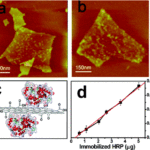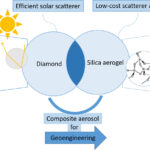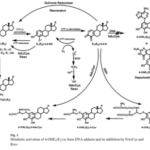January 8, 2025 Graphene, Scientific alternative studies
It was also confirmed that some graphene oxide was deposited in the lungs, liver and spleen 48 hours after injection.
Graphene oxide in blood causes anaphylactic death in primates
Studio di riferimento
Lin, Y.; Zhang, Y.; Li, J.; Kong, H.; Yan, Q.; Zhang, J.; Fan, C. (2020). Blood exposure to graphene oxide may cause anaphylactic death in non-human primates. Nano Today, 35, 100922. https://doi.org/10.1016/j.nantod.2020.100922
Facts analyzed
The analysis of this study is indeed very relevant to confirm once again the toxicity of graphene oxide in the blood, as it can cause anaphylactic death in experiments conducted in vivo on laboratory rats and primates.
In their introduction, the authors acknowledge the vast possibilities opened up by the use of graphene oxide GO, “however, these demonstrations generally remain at a preliminary research stage with limited clinical experience.
A major obstacle is the concern about the safety of the in vivo use of GO.
Therefore, there is an urgent need to evaluate the impact of GO on human health“.
This confirms that very few studies have been conducted on the safety of GO use in humans and that “the potential effects of GO in humans remain unexplored.
Studies in non-human primates can provide valuable information because of their close genetic and physiological relationship to humans.
However, the toxicological profile of GO in non-human primates is not available“.
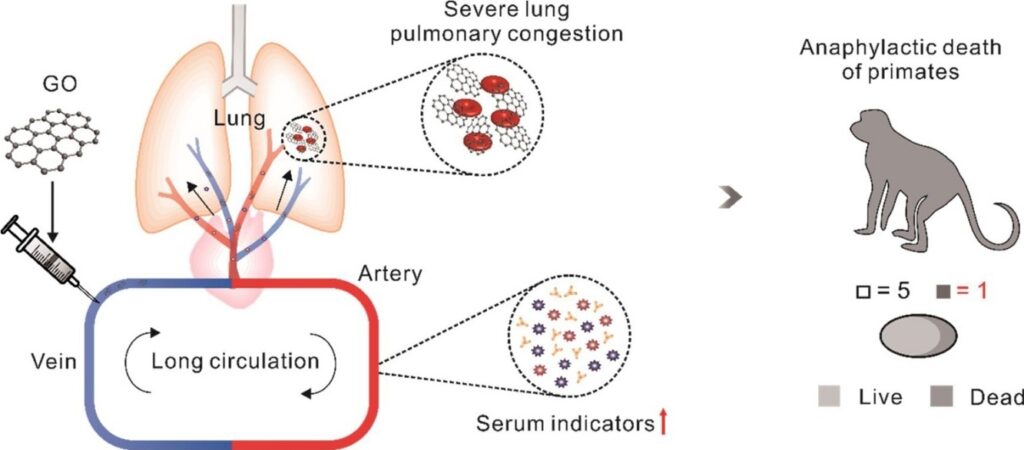
To analyze the effects of exposure to graphene oxide GO in blood, mice and monkeys were tested in vivo, creating control and experimental groups that received an initial “safety” dose.
For comparison, the effects of two other CNMs (carbon nanomaterials) with different morphologies, including one-dimensional (1D) single-walled carbon nanotubes (SWCNTs) and one-dimensional (1D) nanodiamonds (NDs), were also studied.
In addition, the authors point out that the graphene oxide (GO) used was further modified with six-armed branched polyethylene glycol (PEG) to increase its water dispersion and biocompatibility, resulting in a 1.1 nm thick layer and a slightly negatively charged zeta potential.
Among the results, the researchers found that “7 of 121 treated mice died within 1 to 12 hours of exposure to GO, with a mortality rate of 5.8 percent…We observed that at least one mouse exhibited episodes of hematemesis prior to death“.
Although the data were not encouraging, the monkey experiments were even worse, as “one of the five monkeys died approximately 1.5 hours after exposure to GO, with a mortality rate of 20 percent…Before dying, this monkey crouched on the ground with a painful expression (apparently chest pain) and hematemesis“.
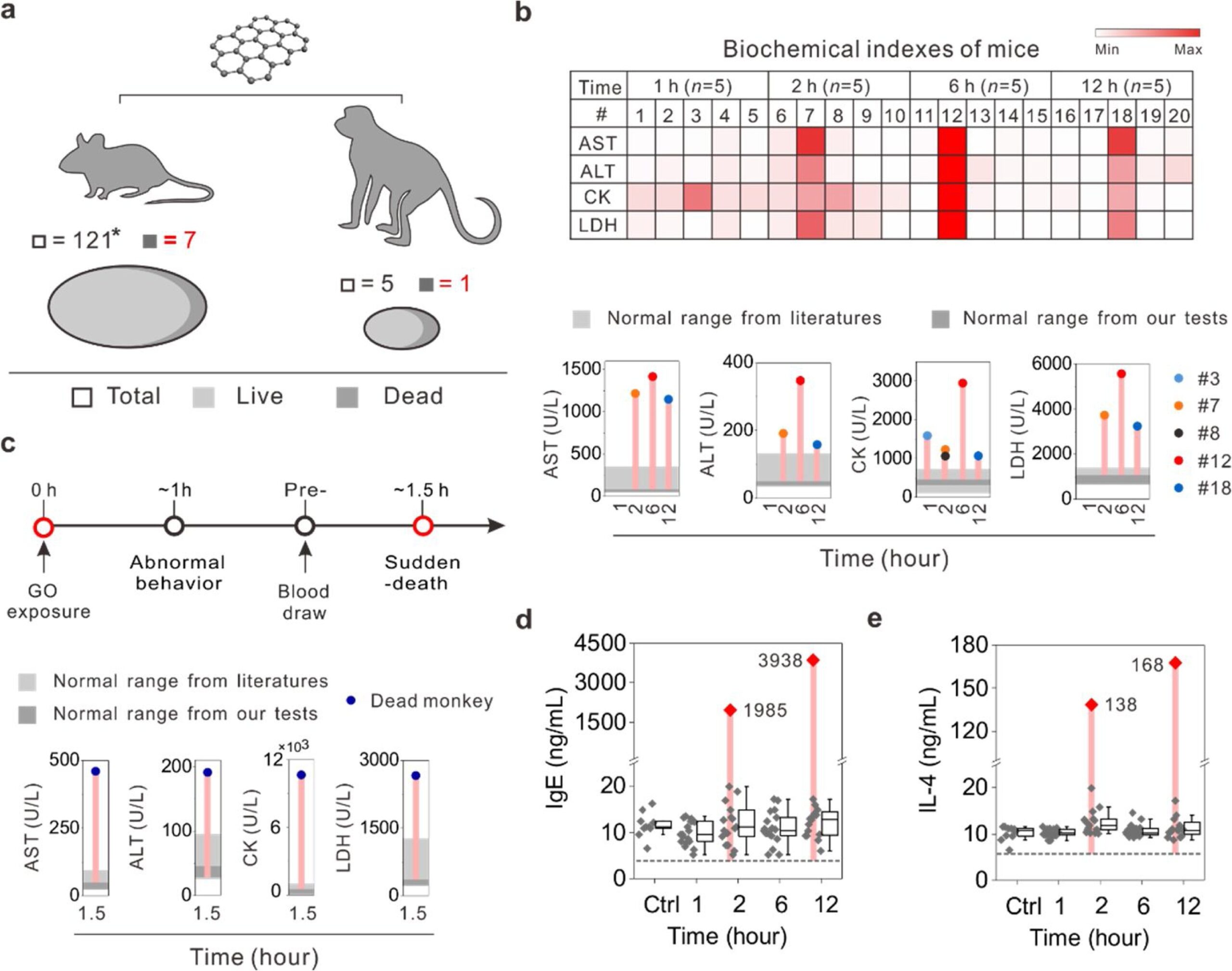
In relation to the blood analysis of surviving mice performed at different time points (1, 2, 6 and 12 h), it was observed that 20% of the mice had abnormal levels of liver function indicators (aspartate transaminase and alanine transaminase) and cardiac indicators (creatine kinase and lactate dehydrogenase). These indicators increased 3-20 times in the mice compared to the average levels in the control group.
As for the blood analysis of the deceased monkey before its death, these levels increased between 8- and 21-fold compared to the control group, “suggesting that anaphylactic reactions (or hypersensitivity reactions) could occur in these GO-treated animals….Anaphylaxis is a severe, life-threatening hypersensitivity reaction (HSR) that occurs when a sensitized organism is exposed to a specific antigen.
It usually occurs within minutes to hours of exposure and is usually associated with a sudden increase in certain liver/cardiac indicators“.
The researchers concluded that mice could suffer or tolerate the anaphylactic reaction better than primates up to a dose of GO equivalent to their body weight and mass.
After observing the anaphylactic effect, the researchers measured serum IgE (immunoglobulin E antibodies) and interleukin-4 (IL-4) levels and found that out of 71 mice that survived GO exposure and underwent blood sampling, two of them (i.e., 2.8 percent) showed abnormally elevated IgE/IL-4 levels compared to the control group, with ranges between 180/13 and 340/16 times higher after 12 hours of GO exposure.
These data confirmed the hypothesis that GO graphene oxide induces anaphylactic reactions in mammals.
Regarding the blood circulation results of GO graphene oxide in animals, “it was found that the plasma half-life in mice was 5 hours, much lower than in monkeys, where it was recorded after 40 hours”.
These data “suggest that the anaphylactic reactions induced by GO may be due to its long residence time in the blood”.
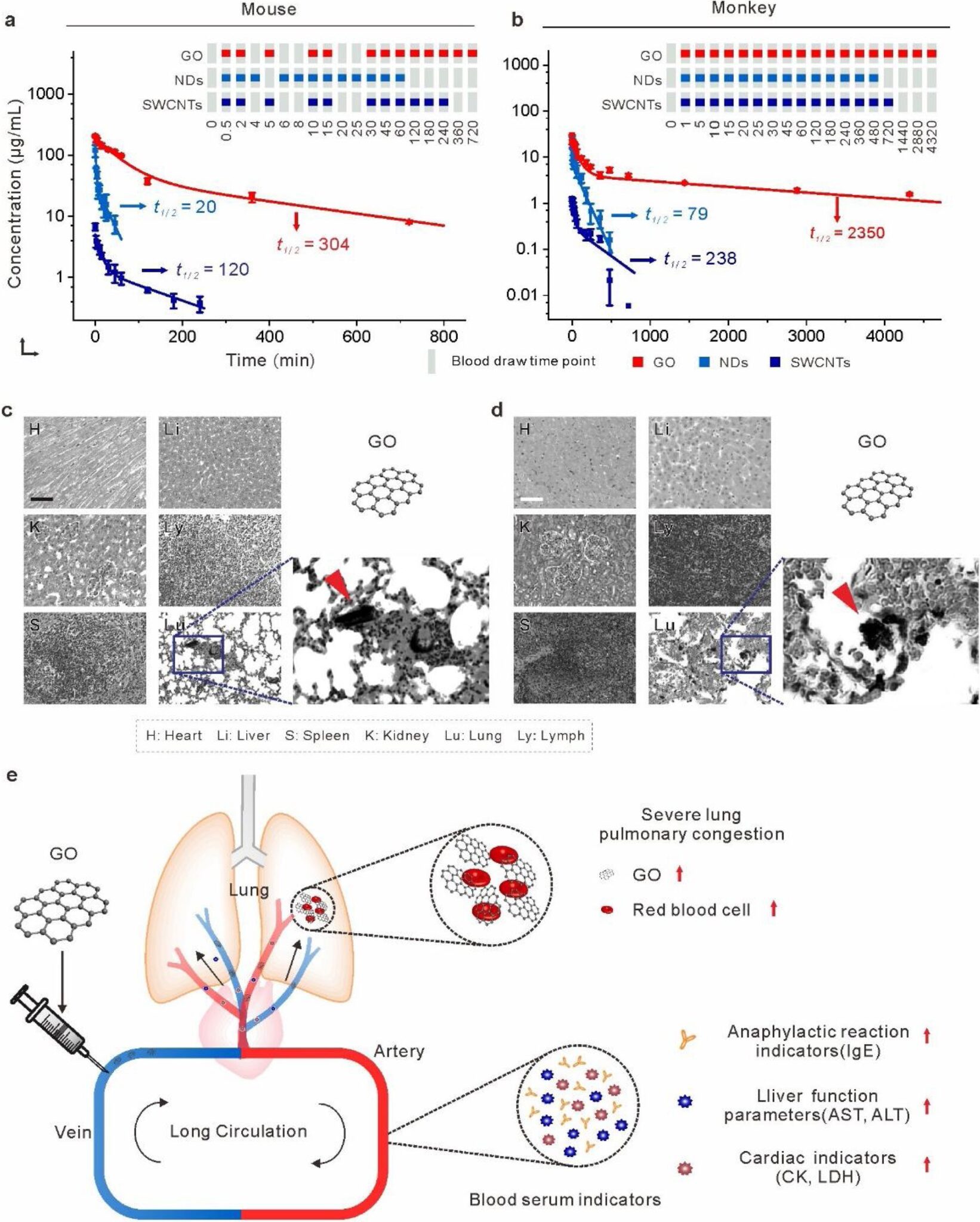
During the autopsy examination of a dead mouse and monkey, the lung parenchyma (a set formed by alveoli, sacs, and alveolar ducts) was analyzed and found to be severely damaged, with a large amount of red blood cells leaking into the cavities, indicating diffuse alveolar hemorrhage.
In addition, “an apparently GO granular black pigment was observed in the lung parenchyma“, which, unlike what was found in the heart, liver, spleen, kidney, and lymph samples of the dead animals, showed no obvious changes.
This led the researchers to conclude that “prolonged circulation of GO in the blood leads to its distal retention and deposition in the lung tissue, resulting in the induction of anaphylactic reactions and fatal pulmonary congestion”.
The results obtained over a longer period of time are also very interesting.
After exposure to GO for 28 days for mice and 90 days for monkeys, it was found that “all animals, except those that showed anaphylactic reactions, showed small pathological changes in their major organs, including the heart, liver, spleen, kidney, lungs and lymph“, meaning that they could develop more serious diseases in the long term.
The study also showed that the animals developed granular black pigments in the lungs or spleen, meaning that the nanomaterials remained in the tissues for days or weeks.
Final thoughts
The article shows that there have been no safety studies of GO in primates, at least until December 2020, the date to which it is dated.
All this means is that the introduction of graphene oxide GO into “vaccines” occurred in the presence of the known problems and harms to human health (no other previous studies on the use of graphene oxide GO in primates have been found at this time).
The article confirms the toxicity hypotheses already found in previous studies (Palmieri, V.; Perini, G.; De Spirito, M.; Papi, M. 2019), in which graphene oxide could cause hemolysis of red blood cells, occlusion of pulmonary vessels and their coagulation, as well as the immune system response, leading to the well-known cytokine storm (Hu, B.. Huang, S.; Yin, L. 2021 | Sinha, P.; Matthay, M.A.; Calfee, C.S. 2020 | Sun, X.; Wang, T.; Cai, D.; Hu, Z.; Liao, H.; Zhi, L.; Wang, A. 2020).
In addition, the article confirms that 48 hours after graphene oxide injection, some of it is deposited in the lungs, liver and spleen.
This may cause pathological effects, inflammatory cell infiltration, lung damage, pulmonary fibrosis, and signs of toxicity in the liver and kidneys (Ema, M.; Gamo, M.; Honda, K. 2017).
Bibliography
1.Ema, M.; Gamo, M.; Honda, K. (2017). A review of toxicity studies on graphene-based nanomaterials in laboratory animals. Regulatory Toxicology and Pharmacology, 85, pp. 7-24. https://doi.org/10.1016/j.yrtph.2017.01.011
2.Hu, B. ; Huang, S.; Yin, L. (2021). The cytokine storm and COVID‐19. Journal of medical virology, 93 (1), pp. 250-256. https://doi.org/10.1002/jmv.26232
3.Palmieri, V.; Perini, G.; De Spirito, M.; Papi, M. (2019). Graphene oxide touches blood : in vivo interactions of bio-coronated 2D materials. Nanoscale Horizons, 4 (2), pp. 273-290. https://doi.org/10.1039/C8NH00318A
4.Sinha, P.; Matthay, MA; Calfee, CS (2020). Is a cytokine storm relevant to COVID-19 ? JAMA internal medicine, 180 (9), pp. 1152-1154. http://jamanetwork.com/article.aspx?doi=10.1001/jamainternmed.2020.3313
5.Sun, X.; Wang, T.; Cai, D.; Hu, Z.; Liao, H.; Zhi, L.; Wang, A. (2020). Cytokine storm intervention in the early stages of COVID-19 pneumonia. Cytokine & growth factor reviews, 53, pp. 38-42. https://doi.org/10.1016/j.cytogfr.2020.04.002










